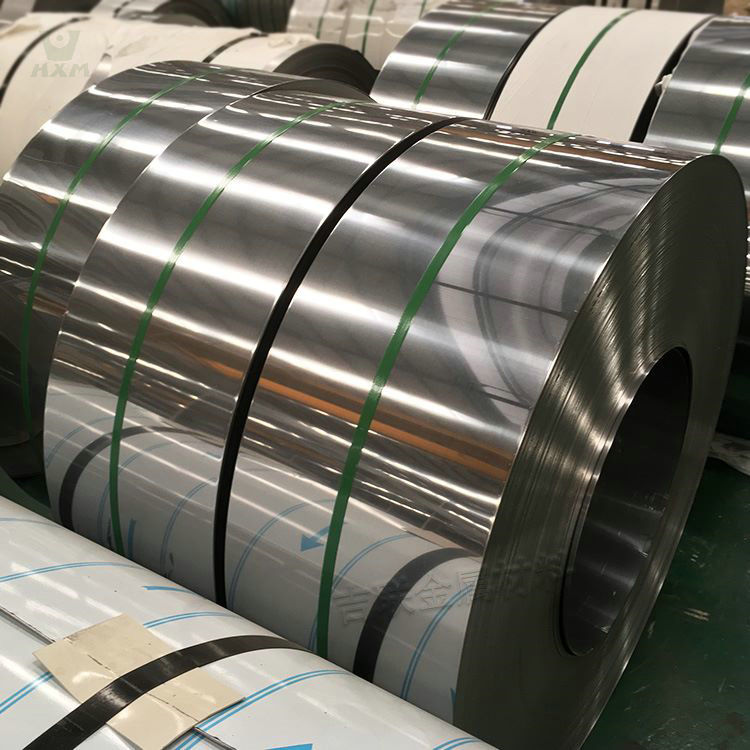
310 stainless steel strip Supplier
- Thickness: 0.03mm – 1.5mm
- Width: 3mm – 600mm, For the wider products pls check in coil products
- Finish: 2B, BA, TR
- TEMPER/Hardness: ANN / Soft, 1/2, 3/4, FH/Full hard, EH, SEH/Super EH
- Coil Diameter /ID: 200mm, 400mm, 510mm, 608mm
- MOQ: 2MT
product description of 310 stainless steel strip
Made of high quality 310 stainless steel material, 310 stainless steel strip has excellent high temperature resistance and corrosion resistance. It is an ideal choice, especially for applications requiring work in high temperature and corrosive environments.
310 stainless steel strip has a similar chemical composition and mechanical properties compared to 310S stainless steel strip. However, 310 stainless steel strip has slightly better properties at elevated temperatures than 310S stainless steel strip. 310 stainless steel strip has a higher heat resistance and can withstand higher operating temperatures, making it more suitable for applications that require long periods of high temperature work.
310 stainless steel strip has excellent machinability and can be easily bent, cut and formed to suit a variety of manufacturing requirements. It also has good welding properties, making it easier to handle during manufacturing. 310 stainless steel strip’s high strength and corrosion resistance make it the material of choice for many industries, including pharmaceuticals, chemicals, energy, food processing and more.
As a reliable 310 stainless steel strip supplier, we are committed to providing high quality products and excellent service.
Specification of 310 stainless steel strip
Chemical Components of 310 Stainless Steel Strip
| 310 | C % | Si % | Mn % | P% | S% | Cr% | Ni% |
| ASTM | ≤ 0.25 | ≤ 0.75 | ≤2 | ≤0.045 | ≤0.03 | 24-26 | 19-22 |
| JIS | ≤ 0.25 | ≤ 1.5 | ≤2 | ≤0.045 | ≤0.03 | 24-26 | 19-22 |
| EN | ≤ 0.1 | ≤ 1.5 | ≤2 | ≤0.045 | ≤0.015 | 24-26 | 19-22 |
| GB | ≤ 0.25 | ≤ 1.5 | ≤2 | ≤0.045 | ≤0.03 | 24-26 | 19-22 |
Mechanical Properties of 310 Stainless Steel Strip
| 310 | T.S.(MPa) | Y.S.(MPa) | EL.(%) | HB |
| ASTM | ≥ 515 | ≥ 205 | ≥ 40 | ≤ 217 |
| JIS | ≥ 520 | ≥ 205 | ≥ 40 | ≤ 200 |
| EN | ≥ 520 | ≥ 210 | ≥ 40 | ≤ 200 |
| GB | ≥ 520 | ≥ 205 | ≥ 40 | ≤ 200 |
Physical Properties of 310 Stainless Steel Strip
| 310 | Density (g/cm³) | Melting point (℃) | Thermal conductivity (W/m-K) | Coefficient of thermal expansion (10^-6/K) | Elastic Modulus(GPa) | Magnetic permeability (H/m) |
| ASTM | 7.98 | 1402-1454 | 14.2-18.7 | 15.9-16.2 | 200 | 1.02 |
| JIS | 7.98 | 1402-1454 | 14.2-18.7 | 15.9-16.2 | 200 | 1.02 |
| EN | 7.98 | 1402-1454 | 15.0-16.2 | 15.9-16.5 | 200 | 1.02 |
| GB | 7.98 | 1402-1454 | 14.2-18.7 | 15.9-16.2 | 200 | 1.02 |
Features of 310 stainless steel strip
310 stainless steel strip is highly regarded for its excellent resistance to high temperatures. Its high temperature stability makes it ideal for a variety of high temperature applications. This stainless steel strip is capable of maintaining strength and hardness at temperatures up to 1100°C, demonstrating excellent high temperature stability. It also has excellent oxidation resistance, resisting oxidation and thermal shock, thus extending its service life and maintaining its aesthetic appearance. In addition, 310 stainless steel strip exhibits excellent corrosion resistance to common corrosive media, making it suitable for use in the chemical and petrochemical industries, among others. Its low coefficient of thermal expansion ensures dimensional stability at high temperatures, while its high strength ensures its reliability and durability under extreme conditions.us nec ullamcorper mattis, pulvinar dapibus leo.
310 stainless steel strip is highly acclaimed for its excellent corrosion resistance. It has excellent corrosion resistance and is able to withstand a wide range of corrosive media, including acidic solutions, alkaline solutions and oxidizing media. This makes 310 stainless steel strip ideal for use in harsh environments, especially in the chemical industry, petrochemicals, food processing and marine environments. Its excellent corrosion resistance allows the material to maintain its strength and appearance for a long time, extending its service life. In addition, 310 stainless steel strip exhibits good resistance to oxidation and thermal corrosion in high temperature environments.
310 stainless steel strip is recognized for its superior high strength. It has excellent mechanical properties and is capable of withstanding high strength loads and stresses.
The high strength of 310 stainless steel strip is mainly attributed to its special alloy composition and heat treatment process. It contains a high percentage of chromium and nickel, which gives it good tensile and yield strengths. In addition, the added alloying elements are able to improve the oxidation and heat resistance of 310 stainless steel strip, further enhancing its strength at high temperatures.
The strength of 310 stainless steel strip can be further improved by selecting the appropriate process and heat treatment method. The cooling rate and temperature control during the heat treatment process can adjust the grain size and crystal structure, thus affecting its mechanical properties. This allows 310 stainless steel strip to meet the demand for high strength materials in a variety of applications.
310 stainless steel strip is known for its excellent resistance to oxidation. Oxidation resistance refers to the ability of a material to resist oxidation reactions in high temperature and oxygen environments. Under high temperature conditions, many metals and alloys undergo oxidation reactions that result in corrosion and damage to surfaces. However, 310 stainless steel strip has excellent oxidation resistance, allowing it to maintain its surface stability and finish for long periods of time in high temperature environments.
The oxidation resistance of 310 stainless steel strip is mainly attributed to the chromium and nickel elements in its alloy composition. The high content of chromium in 310 stainless steel strip allows the formation of a dense chromium oxide layer (Cr2O3) on the surface, effectively preventing the intrusion of oxygen and other oxides. This chromium oxide layer has strong adhesion and stability, forming a protective film that prevents further oxidation reactions from occurring.
310 stainless steel strip is widely preferred for its good plasticity. Plasticity is the ability of a material to deform under force without fracture. 310 stainless steel strip has excellent plasticity, making it easy to machine and form for a variety of complex manufacturing processes and applications.
Because 310 stainless steel strip has a high chromium and nickel alloy composition, this gives it good plasticity and machinability. It can be plastically deformed through cold working, hot working and forming processes such as cutting, bending, stamping, stretching and forming. 310 stainless steel strip’s excellent plasticity makes it suitable for a variety of complex manufacturing processes and can meet the specific needs of different industries.
As a professional stainless steel strip supplier, our stainless steel strips are finely processed and optimized for excellent plasticity to meet your various processing and forming needs.
Application of 310 stainless steel strip
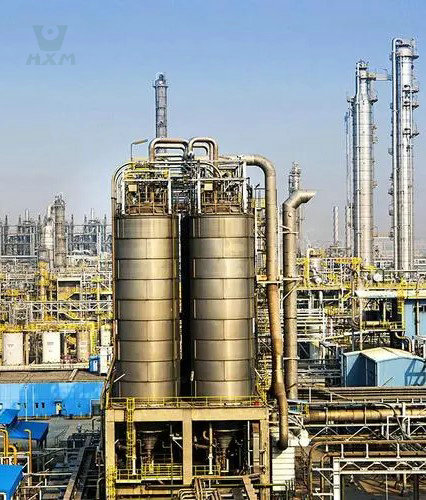
chemical industry
310 stainless steel strip is widely used in the chemical industry because of its excellent high temperature resistance, corrosion resistance and high strength. In the manufacture of high temperature furnaces, furnace doors, heat treatment equipment, furnace radiation tubes, etc., 310 stainless steel strip has obvious advantages. In addition, 310 stainless steel strip is also used in the production of chemical equipment, storage tanks, reactors, pipelines and valves. Due to its excellent performance, 310 stainless steel strip has become one of the indispensable materials in the chemical industry. As a professional stainless steel strip supplier, we offer stainless steel strip in various specifications and materials, including 310 stainless steel strip, to meet the various needs of our customers.
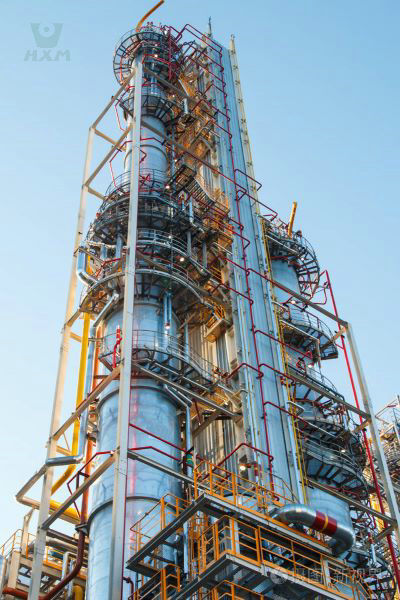
oil and gas industry
310 stainless steel strip plays an important role in the oil and gas industry. Due to its excellent resistance to high temperatures, corrosion and oxidation, 310 stainless steel strip is widely used in oil and gas extraction, storage and transportation. In the oil and gas extraction process, 310 stainless steel strip is commonly used to manufacture piping systems such as oil well casing, oil and gas pipelines. It can withstand high temperature and pressure, corrosive media and harsh working conditions to ensure the safe transportation and storage of oil and natural gas. In addition, 310 stainless steel strip can also be used in the manufacture of key equipment and components in petroleum refining and chemical processes, such as petroleum heating furnaces, furnace tubes, heat exchangers, reactors, etc.. It can work stably under high temperature environment and resist the erosion of corrosive media to ensure the long-term reliable operation of the equipment. As a professional stainless steel strip supplier, we provide high quality 310 stainless steel strip to meet the needs of oil and gas industry.
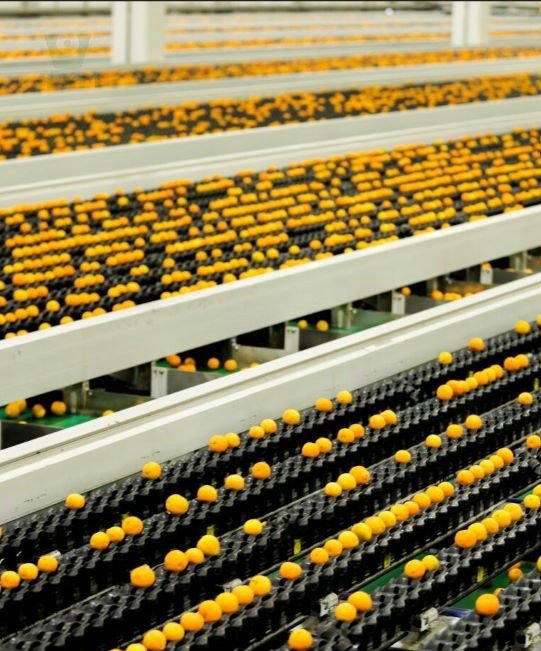
food processing industry
310 stainless steel strip has a wide range of applications in the food processing industry. Due to its excellent corrosion resistance, high temperature resistance and sanitary properties, 310 stainless steel belts are ideal for food processing equipment and containers. In food processing, 310 stainless steel strip is commonly used to manufacture various food processing equipment, such as ovens, frying pans, hot water tanks, food conveyor belts, etc. It can withstand high temperature operation and resist corrosive substances such as food acids, alkalis and salts to ensure food safety and hygiene. In addition, 310 stainless steel strip is also used to manufacture food storage and transportation containers, such as food tanks, storage tanks, and conveying pipes. Its corrosion resistance ensures the quality and hygiene of food, avoiding the risk of contamination by impurities and food spoilage. As your trusted partner, we are committed to providing quality stainless steel solutions for the food processing industry.
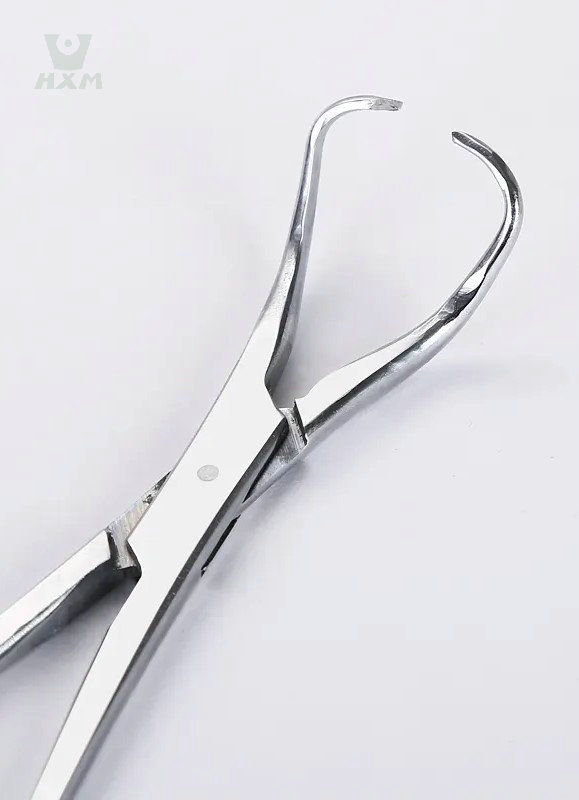
medical equipment industry
310 stainless steel strip is widely used in the medical equipment industry thanks to its excellent performance and hygienic properties. Due to its high temperature oxidation resistance, corrosion resistance and good plasticity, 310 stainless steel strip has become the material of choice for many medical devices. In medical equipment manufacturing, 310 stainless steel strip is commonly used in the manufacture of surgical instruments, surgical instruments, testing equipment, syringes, medical forceps, etc.. Its corrosion resistance ensures the long-term use of the equipment and its ability to resist blood, drugs and other chemicals. In addition, 310 stainless steel strip is commonly used in the manufacture of medical storage and transport containers, such as medicine cabinets, infusion sets, drug storage tanks, etc. Its hygienic properties and corrosion resistance make it ideal for the safe storage and transport of pharmaceuticals. As a reliable stainless steel strip supplier, we offer high quality 310 stainless steel strip to meet the needs of the medical equipment industry.

aerospace industry
310 stainless steel strip plays an important role in the aerospace industry, and its excellent performance and reliability make it ideal for many aerospace applications. 310 stainless steel strip is widely used in aerospace engine component manufacturing due to its excellent high temperature oxidation resistance and ability to maintain its strength and stability under extreme temperatures and harsh environments. It plays an important role in critical components such as gas turbine engines, jet engines, and turbine blades. In addition, 310 stainless steel strip is also used in aerospace structural components, fuel storage and delivery systems, navigation and communication equipment, and more. As a reliable stainless steel strip supplier, we offer high quality 310 stainless steel strip to meet the needs of the aerospace industry.
FAQ
Chemical Composition: The chemical composition of 310 stainless steel strip contains about 25% chromium, about 20% nickel, and about 0.25% carbon, and also contains small amounts of silicon, manganese, and phosphorus. While 310S stainless steel strip has reduced carbon content based on 310, usually below 0.08%, to provide better high-temperature resistance.
High-Temperature Performance: 310 stainless steel strip has excellent high-temperature resistance, which can maintain their strength and oxidation resistance in a high-temperature environment. And 310S stainless steel strip further improves its high-temperature resistance by reducing the carbon content, which enables it to work at higher temperatures.
Welding Performance: Due to the difference in carbon content, the 310S stainless steel strip has better weldability in the welding process. It has more stable weldability at high temperatures, making it easier to achieve good weld quality.
Corrosion Resistance: 310 stainless steel strip and 310S stainless steel strip have similar corrosion resistance in general corrosive environments. However, due to the low carbon content of 310S, it has better oxidation resistance at high temperatures.
Chemical Composition: The chemical composition of 310 stainless steel strip contains about 25% chromium, about 20% nickel and about 0.25% carbon, and also contains a small amount of silicon, manganese and phosphorus. The chemical composition of 304 stainless steel strip contains about 18% chromium and about 8% nickel, with no or very low carbon content.
High Temperature Performance: 310 stainless steel strip has excellent high temperature resistance and is able to maintain its strength and oxidation resistance in high temperature environments. The high temperature performance of 304 stainless steel strip is relatively low, and it may oxidize or lose some of its strength at higher temperatures.
Corrosion Resistance: 310 stainless steel strip and 304 stainless steel strip both have good corrosion resistance in general corrosive environments. However, due to the higher chromium and nickel content of 310 stainless steel strip, its corrosion resistance is better under corrosive media such as high temperature and strong acids and alkalis.
Application Areas: Due to its excellent high temperature performance, 310 stainless steel strip is commonly used in high temperature furnaces, oil refinery equipment, heat treatment equipment and other fields that require high temperature resistance. And 304 stainless steel belt is widely used in various fields such as architectural decoration, manufacturing, food processing, etc.
Chemical Composition: 310 stainless steel strip is mainly composed of chromium (Cr), nickel (Ni) and molybdenum (Mo), with high chromium and high nickel content; while 316 stainless steel strip contains chromium, nickel, molybdenum and some other elements, such as relatively high molybdenum content.
Corrosion Resistance: 310 stainless steel strip has excellent corrosion resistance in high temperature and strong oxidizing environments, especially for high temperature applications; while 316 stainless steel strip has good corrosion resistance in general atmospheric and chemical environments, especially for acid corrosion and alkali corrosion resistant applications.
Mechanical Properties: 310 stainless steel strip has high tensile strength and resistance to thermal expansion and is suitable for engineering applications in high temperature environments; while 316 stainless steel strip has good tensile strength and plasticity and is suitable for general engineering and structural applications.
Magnetism: 310 stainless steel strip is usually non-magnetic, i.e. has a low magnetic permeability; while 316 stainless steel strip has some magnetic properties, although not as strong as ordinary carbon steel.
Application Areas: Because of its high temperature resistance and oxidation resistance, 310 stainless steel strip is commonly used in heat treatment equipment, high temperature furnaces, heat exchangers and other high temperature applications; while 316 stainless steel strip is widely used in chemical, marine, medical, food processing and other fields, and is especially suitable for corrosion resistance and high hygiene requirements.
Here are best ways to cut stainless steel strips for your reference:
Shear Cutting: Manual shears, shear tools, or shear machinery can be used for shear cutting. This method is suitable for thinner stainless steel strips and can achieve fast and accurate cutting.
High-Speed Cutting: Using high-speed cutting equipment, such as laser cutting machines, plasma cutting machines, etc., for high-speed cutting. This method is suitable for thicker stainless steel strips and can achieve efficient and accurate cutting.
Hobbing: Cutting by hobbing is suitable for wider and thinner stainless steel strips. Hobbing allows for continuous cutting and is suitable for high-volume production.
Waterjet Cutting: Cutting with high-pressure water flow and abrasive, suitable for cutting various stainless steel strips, especially for complex shapes and precision cutting needs.
Sawing Cutting: Using metal saw blades for cutting, suitable for wider stainless steel strips. Saw cutting is slower, but suitable for cutting various stainless steel materials and larger sizes.
Huaxiao stainless steel supplier offers a wide range of stainless steel strip sizes to meet the different needs of our customers.
The surface treatment methods of 310 stainless steel strips can be selected according to the application needs and the requirements of the usage environment. The following are some common surface finishes:
2B Surface: Surface obtained by cold rolling and annealing process with a low brightness rolled finish, suitable for generally less demanding applications.
BA Surface: Surface obtained by bright annealing process with high brightness and smoothness for demanding decorative applications.
No.4 Surface: Abraded surface with uniform fine grit texture for decorative and anti-scratch demanding applications.
Mirror Surface: Multi-polished surface with extremely high brightness and mirror effect for highly demanding decorative and reflective applications.
Titanium Surface: treated with a titanium coating for a metallic feel and scratch resistance for demanding decorative and anti-scratch applications.
Huaxiao stainless steel strip supplier can customize the surface treatment according to specific requirements, such as anti-fingerprint treatment, anti-corrosion treatment, etc., to meet the needs of different fields.
Get In touch
Ready to Elevate Your Projects? Dive into our Stainless Steel Collection and Submit Your Specifications Today!
Phone/WhatsApp/WeChat:
+86 13052085117
Email: export82@huaxia-intl.com
Address: RM557, NO.1388 Jiangyue Road, Shanghai China



